If you’ve been searching “postpartum weight loss meals that maintain milk supply” then you are not alone. Here’s what I’ve found. And it makes sense.
Disclaimer: This is not medical advice, just a mom doing research and sharing the results. Consult with a doctor, midwife, lactation consultant, or nutritionist that you trust and make the best decisions for yourself. Advice varies, a lot, between practitioners.

This post may contain affiliate links, which means we may receive a commission, at no extra cost to you, if you make a purchase through a link. Please see our full disclosure for further information.
Postpartum Weight Loss Meals that Maintain Milk Supply
While everyone’s metabolism will react differently to different dietary restrictions, there are a few key principles I am confident in and willing to base a postpartum weight loss “diet” on.
For weight loss, the main principle is to avoid eating foods that will spike blood sugar and therefore spike a release of insulin. This isn’t just about how much “sugar” is in the food but also about its glycemic index – some foods have sugars but don’t spike insulin. Some spike insulin even without a high sugar content.
For maintaining milk supply for nursing, the main principle is to avoid too steep of a calorie deficit. Your body needs hydration and calories in order to produce milk for your baby. While a calorie deficit is helpful in losing weight, it can decrease your milk supply as well. So maintaining enough calories to feed your Basal Metabolic Rate as well as to produce milk in addition to that is essential.
(Keep in mind that immediately postpartum your body also needs the energy – from healthy calories – to heal itself from birth!)
Using these two principles together as well as understanding the need for movement and exercise, we have the basis for developing a list of postpartum weight loss meals that maintain milk supply.
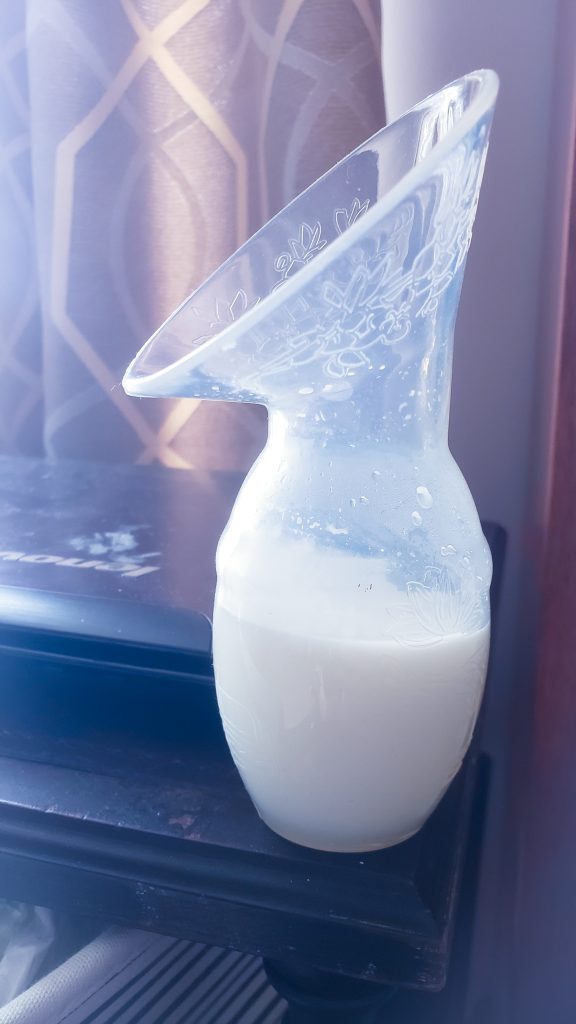
Cutting Down on Sugar
Differentiating between which foods have a high glycemic index and those which don’t is helpful, but if you don’t have the time or mental energy to look this up or hash it out, it may simply be easier and more effective to attempt to cut sugar consumption down.
This begins with substituting or simply skipping those things that we would normally add sugar to, and extends to choosing substitutes and alternatives for foods and products we consume which already have added sugars in them.
Coffee can be a significant place to start since this is a consumable to which we frequently add sugar. In fact, drinks in general can be some of the places where sugars sneak into our diets most easily and stealthily. Finding a good and healthy sweetener to substitute into drinks can be hard as it is most difficult to match or disguise the flavor of some sweeteners. And we know that the easily found sugar substitutes like Splenda that contain aspartame are even worse for our bodies than the sugars we’re avoiding.

So what can we use as healthy sweeteners to substitute for sugar? There are a few out there. Agave, coconut palm sugar, and stevia are three sweeteners that have a low glycemic index, so while they contain carbs, they won’t spike your insulin the way sugar does. Stevia doesn’t have sugars at all, and coconut palm sugar has other health benefits like containing potassium and magnesium which are natural electrolytes.
Of course, it is much easier to substitute sugars out when we cook from scratch or make our own food and meals, which can be difficult especially in those early postpartum days. Finding store bought or premade foods with these substitutes can be difficult, as the normal “sugar free” option usually utilizes aspartame, which we want to avoid at all costs.
As hard as it is, it is possible to find more wholesome alternatives if we’re willing to spend a little more money on “organic” or “natural” foods, or to simply cut out a greater number of the foods which usually contain sugars to begin with.
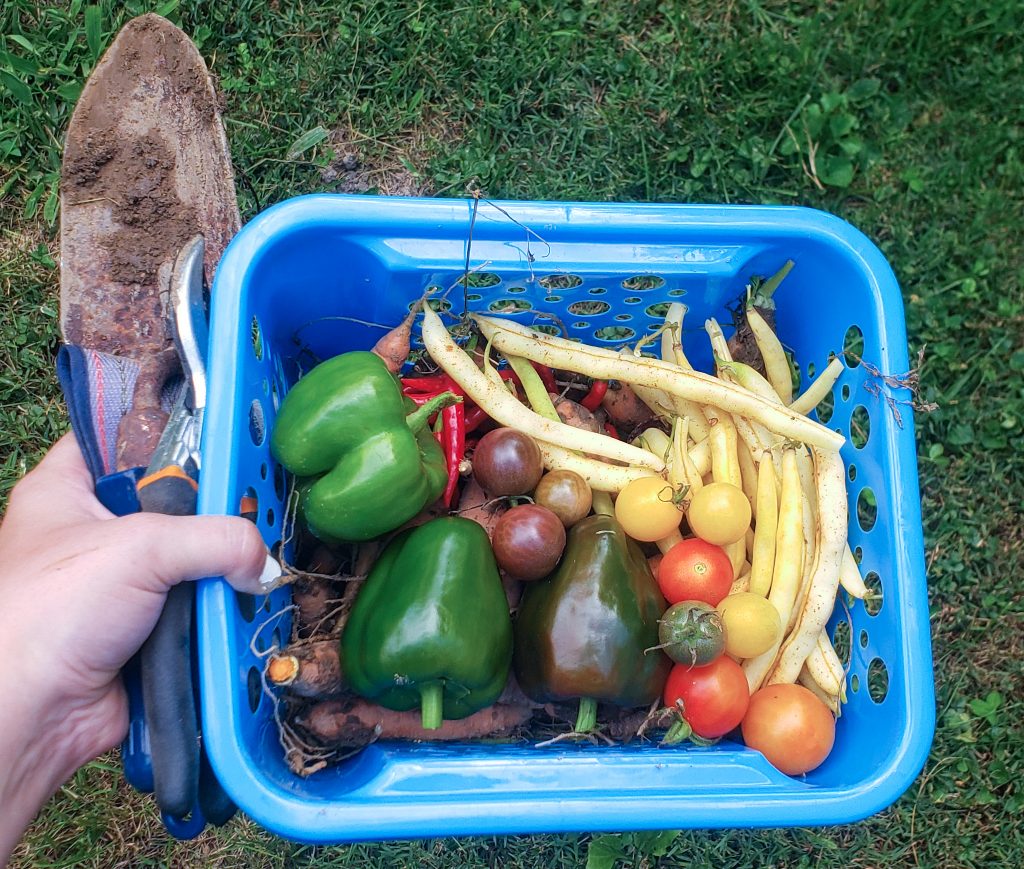
Healthy Calories
Sugars and carbohydrates are a primary source of calories in the standard American diet. So cutting down on sugars and carbohydrates means that we need to be sourcing a healthier kind of calorie if we want good postpartum weight loss meals that maintain milk supply.
It is helpful to keep in mind how calories break down in our foods. Carbohydrates contain 4 calories per gram. Proteins contain 4 calories per gram. Fats contain 9 calories per gram.
If we consume our fats from healthy sources and in good proportions, they can be some of the best sources of healthy calories, as well as being the most satiating. Fats from butter, avocadoes, meats, fish, and nuts are so much better for us than the fats from corn oils, margarine, shortening, etc.
If we treat fats as our primary source of calories then we do not need to eat greater amounts of food to hit caloric intake goals simply because we’ve cut sugars out of our diet. Rather, we end up more satiated and able to go longer between meals if we have consumed our calories from fats because fats hold us over longer than the quick spike and subsequent energy crash from sugars.
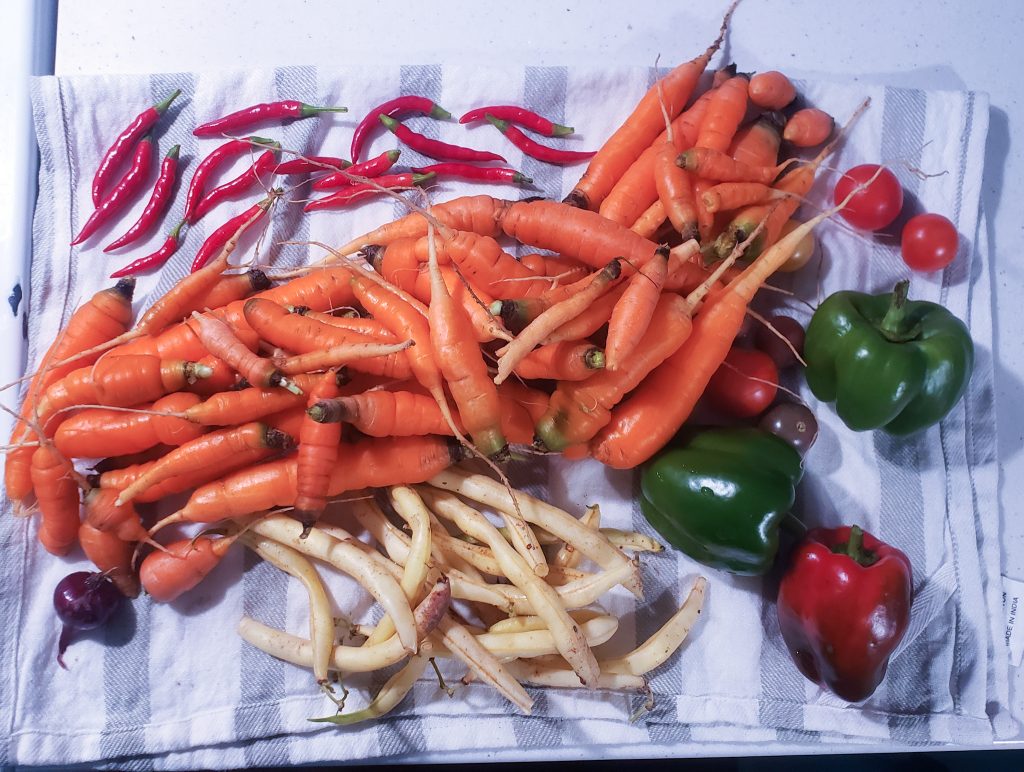
Hydration and Electrolytes
Another key principle of weight loss involves flushing our bodies of waste. Think about the forms in which anything leaves our bodies (besides energy burned). Excrement, urine, and sweat. All three of these methods require correct hydration in order to function effectively.
We already know that our intestines require hydration in order to even begin to adequately digest the foods we eat. We know we need that water to move food and waste through our system and to help us be rid of that waste in all forms. It also makes total sense that in order for your body to produce milk full of all the good things we’re eating to nourish our babies, a huge component of that is from the water we drink. When we are dehydrated our bodies are unable to keep up with milk production.
I learned during my second pregnancy that I could be dehydrated even when I consumed the recommended amount of water. This is because I was drinking water which had no electrolytes while my body was already depleted of electrolytes. Once I added electrolytes into my food and water, my body showed signs of good hydration even without increasing the amount of water I was consuming. That blew my mind.
There are products you can buy, such as Liquid IV, which instantly and easily boost your electrolytes and enable you to hydrate well through drinking water. Just be careful to check what the other ingredients are so that you aren’t inadvertently sabotaging yourself with additional sugars that you’re trying to cut down on. I prefer a more natural sugar free option like Nectar Hydration Powder.
A simple and affordable way to boost electrolytes in our water is to add a pinch of sea salt (non iodized!) and lemon juice. Even this is enough to make a difference, but if you also routinely eat a banana to contribute potassium to your electrolytes, then you’re really golden.
Water, salt, lemon, and a banana? Your body and your baby will thank you, as you begin to see the weight drop more easily while your milk supply remind unhindered.
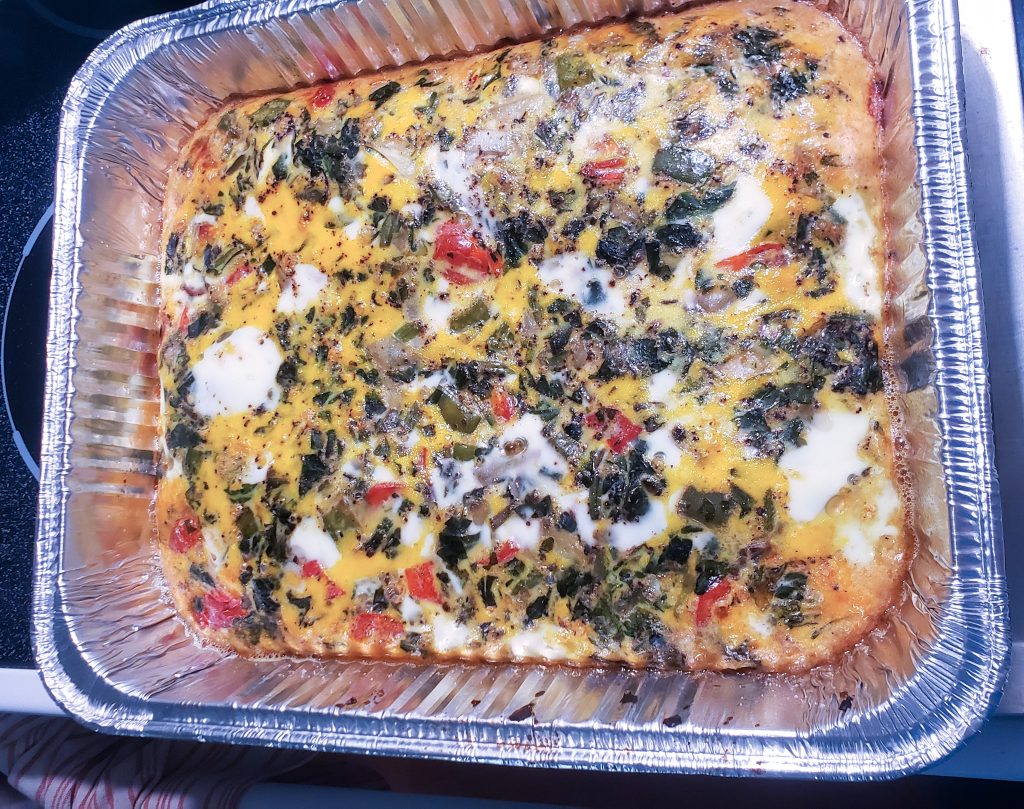
Adjusting Diets
It is hard to implement all of these things at once, or at least it can be if you haven’t had a plan like this in place before. How can we beat that challenge and make this shift in our eating habits?
First, start with the water and hydration. Your brain functions better when it is properly hydrated, which will allow you to be more discerning and logical about all of your choices – especially food. Sleeping as much as you’re able to in order to let your body heal from giving birth can also aid this level headed approach.
Then, start a little at a time. You don’t have to cold-turkey ditch all sugars. You can “wean” off of them, by eating some natural sugars like those in fruit while you decrease artificial or added sugars. Once that habit is established, if you feel you still need less sugar, you can decrease the fruits with higher glycemic index, or remove fruits at all for a time.
For some people cutting the coffee sugar might be the easiest change because it’s the most consciously added sugar. For others, that coffee is of utmost importance, and the only way it’ll go down is with sugar. If that is the case, take it slow, and do what you need to do to maintain sanity.
After all, it really does all come down to priorities. Ask yourself which is more valuable to you – losing the pounds or drinking the sweet coffee. There isn’t really a wrong answer unless one option is literally making you sick.
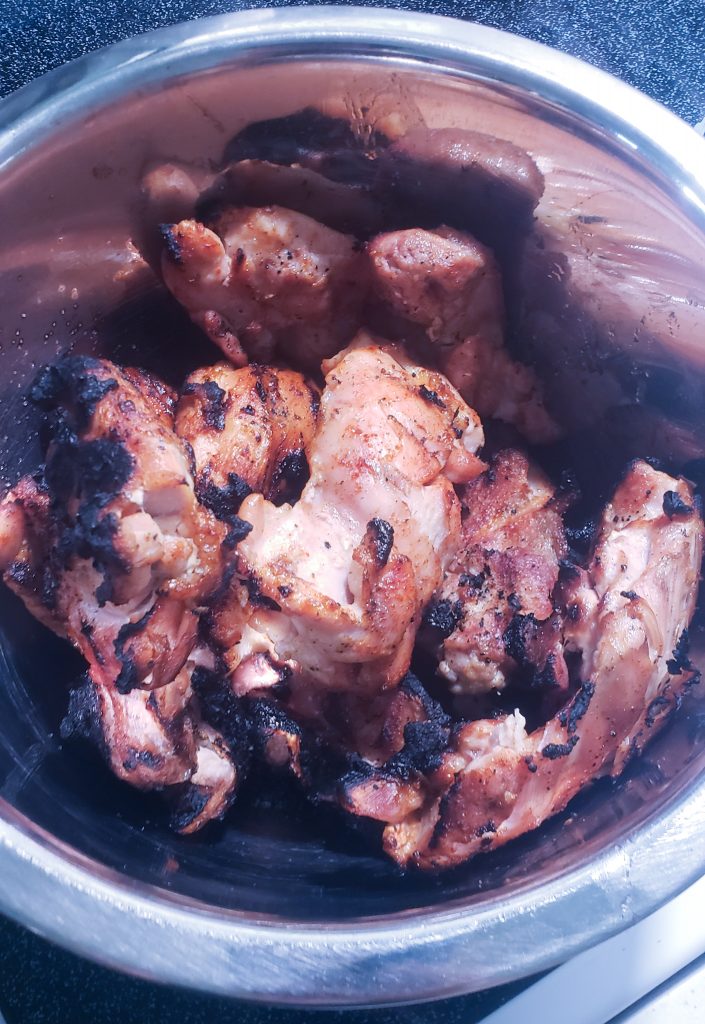
A ‘Meal Plan’ for weight loss meals that maintain milk supply
Creating a meal plan for yourself at this point may be the ticket to getting through this. So what ingredients can go on your meal plan, and how can you put them together?
Let’s start with a general list of good-for-you calories and then try mixing and matching to create some meals.
Chicken. Pork. Beef. Turkey. Tuna. Salmon. Shrimp. Shellfish. Eggs. Ham. Sausage. Salami. Avocado. Almonds. Pecans. Walnuts. Butter. Olive oil. Cheese. Soft cheese. Spinach. Lettuce. Tomatoes. Mushrooms. Olives. Sprouts. Zucchini. Summer squash. Cucumbers. Green beans. Peas. Kale. Cabbage. Broccoli. Carrots. Onions. Celery. Bell peppers. Hot peppers. Brussel sprouts. Snow peas. Apples. Strawberries. Blueberries. Cream. Plain yogurt. Some whole wheat. Some sourdough. Chickpeas. Quinoa.
All of these are low glycemic index, which again, means that they don’t spike your insulin production and cause you to hang onto the weight of the “fat” produced by sugars.
What can you make with combinations of these foods? So many things!
- Breakfasts: omelets, eggs and bacon/sausage/ham, avocado toast, breakfast wraps, chaffles, berries and yogurt, smoothies, quiche, etc.
- Lunches: loaded salad, chicken salad, tuna salad, egg salad, deli wraps, charcuterie boards, veggie trays, etc.
- Dinners: steak and veg, stir fries, deconstructed tacos, fajitas, burritos, stuffed bell peppers, soups, stews, smoked salmon, pork chops and veg, charcuterie, loaded salads, chili, grilled kabobs, surf and turf, curries, etc.
The options here are truly endless.
If you want or need to be looking up the actual glycemic index of particular foods, there are books and guides dedicated entirely to that purpose. The one I like best is The Complete Glycemic Index & Glycemic Load Counters for 4000+ Foods. This book helped my sister manage T1D and helped me recover good eating habits after having three children back to back.
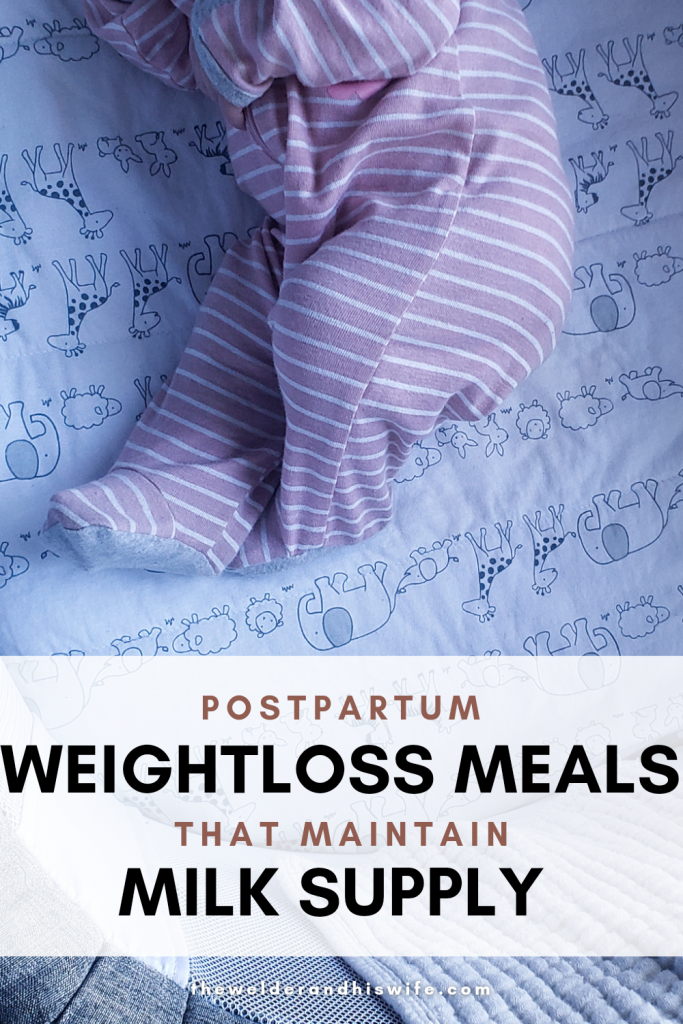
The bottom line for weight loss meals that maintain milk supply
In summary, eat your meat, eggs, and veg. Drink your water and electrolytes diligently. Ditch most of the rest.
Oh, and cut yourself a little slack. You just had a baby. Your body took 9 or more months getting to where it is after having your baby. Don’t try to make it return to “normal” overnight. Because that isn’t normal. Take care of yourself.
